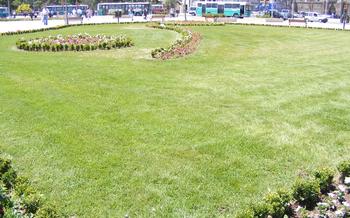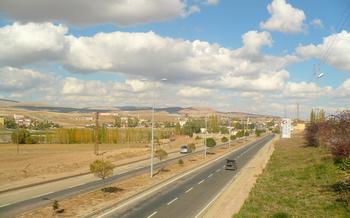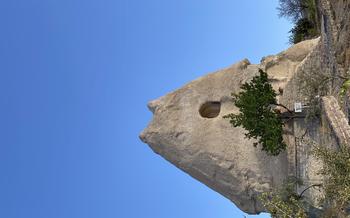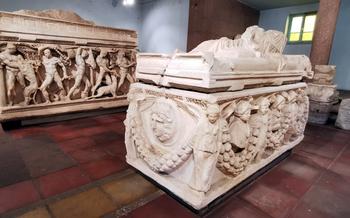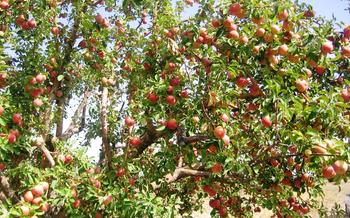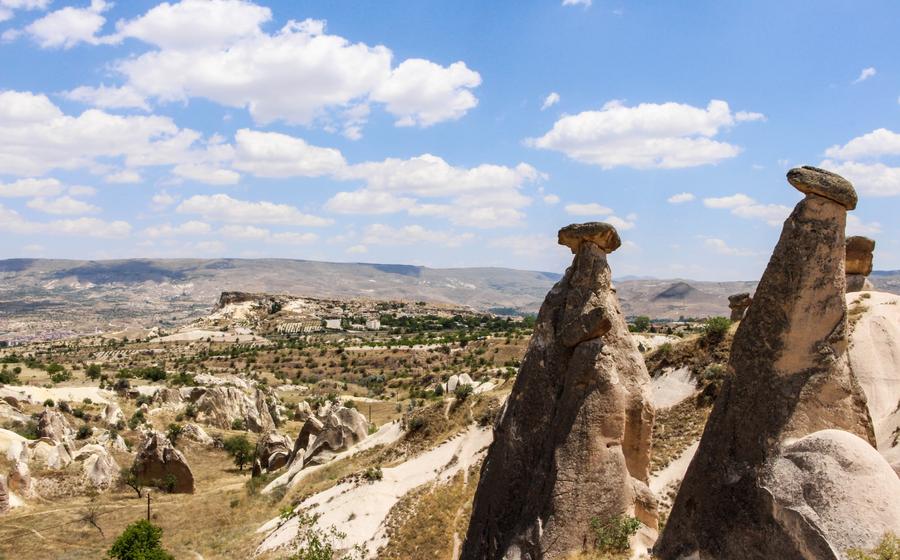
Aşıklı Höyük
- A Journey Through Time: Unraveling the Secrets of Aşıklı Höyük
- The People of Aşıklı Höyük: Ancestors of Modern Civilization
- Excavating the Past: Unearthing the Layers of History
- A Visual Feast: The Painted Walls of Aşıklı Höyük
- The Architecture of Aşıklı Höyük: A Testament to Human Ingenuity
- The Role of Aşıklı Höyük in Neolithic Trade and Cultural Exchange
- Aşıklı Höyük and the Origins of Agriculture: A Pivotal Step in Human History
- The Spirituality of the Aşıklı Höyük People: Connecting with the Divine
- Aşıklı Höyük Museum: A Treasure Trove of Artifacts and Knowledge
- Tips for Planning Your Visit to Aşıklı Höyük
- Aşıklı Höyük and Its Place in World Heritage: A Legacy for Future Generations
- The Legacy of Aşıklı Höyük: Shaping the Course of Human Civilization
- Experiencing Aşıklı Höyük Through Local Cuisine: A Taste of History
- Insider Tip: Uncovering Hidden Gems Beyond Aşıklı Höyük
A Journey Through Time: Unraveling the Secrets of Aşıklı Höyük
Aşıklı Höyük, an ancient settlement mound located in Nevşehir, Turkey, stands as a testament to the ingenuity and resilience of our ancestors. Its historical significance is immense, as it represents one of the earliest known Neolithic settlements in the world. Dating back to around 8000 BC, Aşıklı Höyük offers a glimpse into the lives of our prehistoric predecessors, their customs, and their contributions to human civilization.
Situated approximately 25 kilometers southwest of Nevşehir, Aşıklı Höyük is easily accessible by road. The site is well-maintained and open to visitors, allowing history enthusiasts and curious travelers to explore the ruins and immerse themselves in the atmosphere of this ancient village.
A visit to Aşıklı Höyük typically takes around two to three hours, depending on your level of interest and the pace of your exploration. The entrance fee is minimal, making it an affordable and enriching experience for budget travelers. Whether you're a seasoned history buff or simply seeking a unique cultural encounter, Aşıklı Höyük is a must-visit destination that promises to transport you back in time.
The People of Aşıklı Höyük: Ancestors of Modern Civilization
The Neolithic settlement of Aşıklı Höyük was home to a vibrant community that played a pivotal role in the development of human civilization. These early inhabitants, who lived approximately 11,000 years ago, left behind a rich legacy that offers valuable insights into the origins of our modern society.
The people of Aşıklı Höyük were primarily farmers and herders who subsisted on a diet of domesticated plants and animals. They cultivated wheat, barley, and lentils, and raised sheep, goats, and cattle. This transition from a hunter-gatherer lifestyle to a settled agricultural society marked a significant turning point in human history, as it allowed for the accumulation of surplus food and the development of more complex social structures.
Their lifestyle was characterized by a strong sense of community and cooperation. They lived in circular houses built from mud bricks, and their daily activities revolved around farming, animal husbandry, and crafting tools and pottery. The community exhibited a remarkable level of craftsmanship, as evidenced by the intricate designs and patterns found on their pottery and other artifacts.
In addition to their practical skills, the people of Aşıklı Höyük also possessed a rich cultural and spiritual life. They engaged in rituals and ceremonies that reflected their beliefs and connection to the natural world. These rituals were often associated with agriculture and fertility, as the community relied heavily on the success of their crops and livestock for their survival.
Excavating the Past: Unearthing the Layers of History
Archaeological excavations at Aşıklı Höyük have been ongoing since the 1960s, revealing layer upon layer of human history. Led by renowned archaeologists such as Prof. Dr. Halet Çambel, these excavations have unearthed a wealth of artifacts, structures, and insights into the lives of the Neolithic inhabitants.
Challenges faced by archaeologists include the preservation of the site, as it is located in an earthquake-prone region, and the need to carefully excavate and document the fragile remains without damaging them.
The findings from Aşıklı Höyük have been significant in understanding human history. The site provides evidence of early agriculture, domestication of animals, and the development of complex social structures. It also sheds light on the transition from a hunter-gatherer lifestyle to a settled agricultural community, a pivotal step in human evolution.
A Visual Feast: The Painted Walls of Aşıklı Höyük
The walls of Aşıklı Höyük are adorned with a remarkable collection of well-preserved wall paintings, offering a glimpse into the artistic and symbolic world of the Neolithic inhabitants. These paintings are not merely decorative but serve as a visual narrative, depicting scenes from daily life, religious rituals, and mythological beliefs.
The artists of Aşıklı Höyük employed a range of techniques to create these vibrant murals. They used natural pigments, such as ochre, charcoal, and lime, mixed with animal fat or water-based binders. The paintings were applied directly onto the plastered walls of the houses, using brushes made from animal hair or plant fibers.
The subject matter of the paintings is diverse and captivating. Hunting scenes depict archers aiming at wild animals, showcasing the community's reliance on hunting for sustenance. Ritualistic dances and ceremonies are portrayed, providing insights into the spiritual beliefs and practices of the inhabitants. There are also depictions of animals, both real and mythical, which may have held symbolic or religious significance.
The meanings and symbolism behind these paintings are still being deciphered by archaeologists and historians. Some believe that the paintings served as a form of communication, conveying messages or stories to the community. Others suggest that they had a religious or ritualistic purpose, invoking the divine or protecting the inhabitants from harm.
Regardless of their exact meaning, the paintings of Aşıklı Höyük stand as a testament to the artistic and cultural sophistication of the Neolithic people who called this settlement home. They offer a unique window into the past, allowing us to connect with the lives and imaginations of our ancestors.
The Architecture of Aşıklı Höyük: A Testament to Human Ingenuity
The people of Aşıklı Höyük displayed remarkable ingenuity and skill in their construction techniques and architectural designs. Their houses, built using mudbricks and stone foundations, were carefully planned and laid out in a grid-like pattern. The walls were thick and sturdy, providing insulation and protection from the elements. The roofs were likely made of wood or reeds, supported by wooden beams.
The settlement was divided into several neighborhoods, each with its own distinct character. The houses were typically small and consisted of a single room, with a hearth for cooking and heating. Some houses had larger rooms, possibly used for storage or for gatherings. The streets were narrow and winding, creating a sense of intimacy and community.
Public buildings, such as granaries and workshops, were also constructed in the settlement. These structures were larger and more elaborate than the houses, and they played an important role in the community's economy and social life. The granaries were used to store grain and other agricultural products, while the workshops were used for crafting tools, pottery, and other goods.
The architecture of Aşıklı Höyük reflects the community's adaptation to their environment and their ingenuity in creating a livable and sustainable settlement. Their building techniques and designs have stood the test of time, providing valuable insights into the lives and culture of our Neolithic ancestors.
The Role of Aşıklı Höyük in Neolithic Trade and Cultural Exchange
Aşıklı Höyük's strategic location at the crossroads of important trade routes made it a hub for the exchange of goods and ideas during the Neolithic period. Obsidian tools, a valuable commodity in the ancient world, were brought to Aşıklı Höyük from as far as eastern Anatolia, over 600 kilometers away. These tools were likely traded for agricultural products and other goods produced by the Aşıklı Höyük community.
Excavations at the site have uncovered a wealth of evidence supporting the existence of these trading activities. Archaeologists have discovered large quantities of obsidian tools, as well as pottery and other artifacts from distant regions, indicating the site's role as a regional trading center.
In addition to trading goods, Aşıklı Höyük also served as a conduit for the exchange of cultural ideas and practices. The influence of neighboring cultures can be seen in the architecture, pottery, and art of the Aşıklı Höyük people. For example, the distinctive style of pottery found at the site shows similarities to pottery from the Halaf culture in northern Mesopotamia.
The vibrant trading networks that connected Aşıklı Höyük to other Neolithic communities played a vital role in the development and spread of new technologies, ideas, and cultural practices, contributing to the overall progress of human civilization.
Aşıklı Höyük and the Origins of Agriculture: A Pivotal Step in Human History
Aşıklı Höyük stands as a testament to the pivotal transition that marked the advent of agriculture, a transformation that profoundly reshaped human history. The Neolithic inhabitants of this ancient settlement were among the earliest pioneers of agriculture, cultivating crops and domesticating animals, a practice that would ultimately form the foundation of modern agriculture.
The introduction of agriculture brought about a seismic shift in the lifestyle of the Aşıklı Höyük community. Traditionally, they had relied on hunting and gathering for sustenance, a lifestyle that required constant movement in search of food. However, with the advent of agriculture, they settled into a sedentary lifestyle, establishing permanent dwellings and cultivating crops such as wheat and barley. This transition allowed for a more stable and reliable food supply, leading to population growth and the formation of larger communities.
The domestication of animals, particularly sheep and goats, played an equally crucial role in the agricultural revolution. Animals provided a steady source of meat, milk, and wool, supplementing the plant-based diet of the Aşıklı Höyük people. Animal husbandry also facilitated the transportation of goods and people, further enhancing trade and cultural exchange.
The Neolithic revolution that unfolded at Aşıklı Höyük marked a profound turning point in human history. The transition from a hunter-gatherer society to a settled agricultural community laid the foundation for the development of complex civilizations, paving the way for the emergence of cities, writing, and organized societies.
The Spirituality of the Aşıklı Höyük People: Connecting with the Divine
The people of Aşıklı Höyük held a rich and intricate spiritual belief system that played a central role in their daily lives and community identity. They believed in a pantheon of gods and goddesses, each associated with specific aspects of nature and human life. The most prominent deity was a mother goddess, who represented fertility, creation, and protection.
Religious rituals and ceremonies were an integral part of Aşıklı Höyük society. These rituals were performed to honor the gods, seek their favor, and ensure the well-being of the community. One of the most significant rituals was the annual harvest festival, which celebrated the bounty of the land and expressed gratitude to the gods for their blessings.
The Aşıklı Höyük people also engaged in ancestor worship, believing that their deceased relatives continued to exist in the spirit world. They built elaborate tombs and burial chambers, where they buried their dead with grave goods to accompany them on their journey to the afterlife.
The spirituality of the Aşıklı Höyük people was deeply intertwined with their daily lives. It influenced their art, architecture, and social customs, shaping the very fabric of their society. The discovery of religious artifacts and evidence of spiritual practices at Aşıklı Höyük provides valuable insights into the origins of human spirituality and the development of religious beliefs in early human societies.
Aşıklı Höyük Museum: A Treasure Trove of Artifacts and Knowledge
The Aşıklı Höyük Museum, located a short distance from the archaeological site, serves as a repository of priceless artifacts and knowledge unearthed during the excavations. This treasure trove houses a comprehensive collection of relics from the Neolithic settlement, meticulously preserved and displayed for visitors to witness and appreciate.
Upon entering the museum, you are greeted by an array of pottery vessels, tools, and other everyday items that provide glimpses into the daily lives of the Aşıklı Höyük people. These artifacts offer tangible evidence of their craftsmanship, ingenuity, and resourcefulness.
Among the highlights of the museum's collection are the intricately painted wall fragments that once adorned the interiors of the Neolithic houses. These vibrant and well-preserved paintings showcase the artistic talents of the community and provide valuable insights into their beliefs, mythology, and worldview.
Interactive exhibits and multimedia presentations further enhance the museum experience, immersing visitors in the history and culture of Aşıklı Höyük. Through these interactive displays, you can learn about the archaeological research conducted at the site, the challenges faced by archaeologists, and the significance of the findings for understanding human history.
The museum also features a section dedicated to the role of Aşıklı Höyük in the development of agriculture. Here, you can explore the origins of plant and animal domestication, and gain insights into how this pivotal transition transformed the community's way of life.
Whether you are a history buff, an archaeology enthusiast, or simply someone curious about the roots of human civilization, the Aşıklı Höyük Museum is a must-visit destination. Its rich collection of artifacts, engaging exhibits, and knowledgeable staff will transport you back in time, allowing you to experience the wonders of this ancient settlement.
Tips for Planning Your Visit to Aşıklı Höyük
Visiting Aşıklı Höyük is a unique and enriching experience, but planning ahead can make it even more enjoyable. Here are some tips to ensure a smooth and memorable visit:
Best Time to Visit: - The best time to visit Aşıklı Höyük is during the spring or fall when the weather is pleasant. Summers can be hot, and winters can be cold and rainy.
Guided Tours: - Guided tours are available in various languages and provide an in-depth understanding of the site's history and significance. Pre-booking is recommended to secure your spot.
Facilities for Visitors: - Parking is available near the site, and restrooms are located within the museum building. There are no restaurants or cafes on-site, so it's advisable to bring snacks and drinks, especially if you plan on staying for a longer period.
Accessibility: - The site is wheelchair accessible, and ramps are available for easy navigation. However, some areas may require assistance due to uneven terrain.
Duration of Visit: - Plan to spend at least two to three hours exploring the site and the museum. This will allow you to fully appreciate the exhibits and immerse yourself in the history of Aşıklı Höyük.
Aşıklı Höyük and Its Place in World Heritage: A Legacy for Future Generations
Aşıklı Höyük's exceptional cultural and historical significance has been recognized by UNESCO, earning it the prestigious status of a World Heritage Site. This designation underscores the site's universal value and its contribution to our understanding of human history. Aşıklı Höyük stands as a testament to the ingenuity, creativity, and resilience of our ancestors, who laid the foundation for the development of agriculture, architecture, and cultural practices that continue to shape our world today.
The inclusion of Aşıklı Höyük on the World Heritage List highlights the importance of preserving and protecting this unique site for future generations. Ongoing efforts are underway to ensure the site's conservation and management, allowing future scholars and visitors to continue to learn from and be inspired by this remarkable window into our past. Aşıklı Höyük serves as a reminder of our shared heritage and the interconnectedness of human civilizations across time and space.
The Legacy of Aşıklı Höyük: Shaping the Course of Human Civilization
Aşıklı Höyük's legacy extends far beyond its physical remains. This Neolithic settlement played a pivotal role in shaping the course of human civilization. Its inhabitants were among the first to embrace agriculture, domesticate animals, and develop complex social structures. These innovations laid the foundation for the rise of sedentary communities, the development of urban centers, and the emergence of civilization as we know it.
The legacy of Aşıklı Höyük is evident in the cultural and technological advancements that spread throughout the region and beyond. Its influence can be seen in the architectural styles, agricultural practices, and artistic traditions of subsequent civilizations. The site stands as a testament to the ingenuity and resilience of our ancestors, who laid the groundwork for the societies we live in today.
Moreover, Aşıklı Höyük's legacy continues to inspire and inform contemporary research and understanding of human history and evolution. Archaeological excavations and studies at the site have provided invaluable insights into the origins of agriculture, the development of social hierarchies, and the emergence of complex cultural expressions. This knowledge has helped us to better understand the roots of our own civilization and appreciate the profound impact of our Neolithic ancestors on the trajectory of human history.
Experiencing Aşıklı Höyük Through Local Cuisine: A Taste of History
A journey to Aşıklı Höyük is not complete without indulging in the local cuisine, which offers a unique fusion of flavors and traditions inspired by the Neolithic period. As you explore the ancient wonders of the settlement, take the opportunity to savor dishes that reflect the culinary heritage of the region.
Local restaurants and cafes are proud to present a menu that celebrates the past, featuring dishes prepared with ingredients that were once staples for the Aşıklı Höyük inhabitants. From hearty stews and soups to freshly baked bread and grilled meats, each dish is a testament to the ingenuity and resourcefulness of our ancestors.
For a truly immersive experience, try the traditional "Aşıklı Höyük Kavurması", a slow-cooked lamb stew that captures the essence of Neolithic cuisine. The tender meat, simmered in a rich tomato and pepper sauce, is a flavorful tribute to the community's reliance on animal husbandry.
Another must-try is the "Nohut Çorbası", a hearty chickpea soup that has been a staple in the region for centuries. The creamy texture and aromatic spices evoke the warmth and comfort of Neolithic homes.
Vegetarians will delight in the "Mercimek Köftesi", delicious lentil patties that showcase the versatility of plant-based ingredients. Served with fresh herbs and a tangy yogurt sauce, these patties are a testament to the creativity of the Neolithic people.
As you savor these culinary delights, remember that you are not just satisfying your taste buds but also connecting with the past. Each bite is a journey through time, transporting you back to the Neolithic era and allowing you to experience the flavors that shaped the lives of our ancestors.
Insider Tip: Uncovering Hidden Gems Beyond Aşıklı Höyük
While Aşıklı Höyük stands as a testament to the region's rich history, it is just one of many hidden gems waiting to be discovered in the vicinity. For those seeking further exploration, the surrounding area offers a treasure trove of lesser-known historical and cultural sites.
Just a short drive away lies the ancient city of Göreme, renowned for its captivating rock-cut churches and monasteries. These architectural marvels, carved directly into the soft rock formations, offer a glimpse into the region's early Christian heritage.
Venture further into the Cappadocia region, and you'll encounter unique geological formations known as fairy chimneys. These towering rock pillars, shaped by centuries of erosion, create a surreal landscape that has captivated travelers for generations.
For those interested in history and archaeology, the nearby town of Ürgüp alberga the Ürgüp Museum, which houses a collection of artifacts and exhibits showcasing the region's rich cultural heritage.
To experience the region's natural beauty, embark on a hike through the Ihlara Valley, a stunning canyon carved by the Melendiz River. The valley is dotted with cave dwellings, churches, and monasteries, offering a glimpse into the area's past while immersing you in its breathtaking scenery.
These are just a few of the hidden gems waiting to be discovered beyond Aşıklı Höyük. By venturing off the beaten path, you'll uncover a wealth of historical and cultural treasures that will enrich your understanding of this fascinating region.

